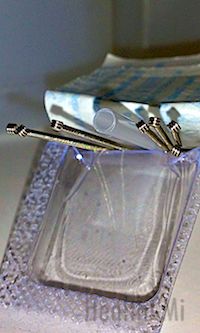New research finds acupuncture an effective treatment modality for hot flashes induced by anti-estrogen therapy for breast cancer patients.  A follow-up after the investigation confirmed that the clinical results persisted for a least one month after the cessation of acupuncture treatments. Acupuncture was given to subject in the study at a rate of 3 times per week for 4 weeks. Each acupuncture treatment ranged between 20 and 25 minutes per session. In a remarkable statistic, all patients responded with significant reduction of hot flashes intensity. The severity was reduced between 70 to 95 percent for all patients in the study. In addition, the number of hot flashes per patient reduced significantly.
A follow-up after the investigation confirmed that the clinical results persisted for a least one month after the cessation of acupuncture treatments. Acupuncture was given to subject in the study at a rate of 3 times per week for 4 weeks. Each acupuncture treatment ranged between 20 and 25 minutes per session. In a remarkable statistic, all patients responded with significant reduction of hot flashes intensity. The severity was reduced between 70 to 95 percent for all patients in the study. In addition, the number of hot flashes per patient reduced significantly.
Breast cancer is the most common form of cancer amoung women. Men also contract breast cancer but male breast cancer is only 1 percent of the total number. Breast cancer is second only to lung cancer in the number of deaths per year. Approximately two-thirds of women contract breast cancer over the age of 50. A genetic predisposition towards breast cancer increases the risk for women by a rate of approximately 55 to 85 percent. The BRCA 1 and BRCA 2 genes are responsible for this increase but are also related to increases in cancer rates for the pancreas and melanoma.
Anti-estrogen hormonal therapy treats hormone receptor positive breast cancer by lowering the volume of estrogen and by blocking the action of estrogen on breast cancer cells. This type of therapy does not help women with hormone receptor negative breast cancer. Side effects of anti-estrogen therapies often include fatigue, hot flashes, mood swings, leukorrhea and vaginal dryness.
The new research investigated the effects of acupuncture on women taking either tamoxifen or anastrozole anti-estrogen therapy for the treatment of breast cancer. Participants received a total of 12 acupuncture treatments over a period of 4 weeks at a rate of 3 times per week. Acupuncture was applied to 5 acupuncture points: DU20, Yin Tang (M-HN-3), HT8, KI10, LV2. The acupuncture needles were sterile, single-use, disposable stainless stell needles that are 30 X 0.25mm. Needle insertion depth ranged from 10 - 20mm and the acupuncture needles were manually adjusted until de-qi arrival. De-qi is often described by licensed acupuncturists as a fish grabbing a hook sensation that is felt through the acupuncture needles. Patients often describe de-qi as spreading, electrical, dull and numb. No electrical stimulation was applied to the acupuncture needles. The needle selection principles were derived from TKM (Traditional Korean Medicine), which is distinct from the selection process in TCM (Traditional Chinese Medicine).
The results of the study were tabulated throughout the regime of care and one month after the last acupuncture treatment. All patients reported significant reductions in the frequency and intensity of hot flashes one month after the last treatment. No serious adverse side effects occurred and the investigators report that acupuncture was “well tolerated.” The researchers noted that there was a mean reduction of hot flashes in excess of 60 percent. The investigators also noted that TKM has potential as a “viable treatment for women with chemotherapy-induced menopause-related hot flashes.” The researchers note that the findings support acupuncture as a treatment for hot flashes for women with breast cancer undergoing anti-estrogen therapy.
Reference:
Jeong, Young Ju, Young Sun Park, Hyo Jung Kwon, Im Hee Shin, Jin Gu Bong, and Sung Hwan Park. "Acupuncture for the Treatment of Hot Flashes in Patients with Breast Cancer Receiving Antiestrogen Therapy: A Pilot Study in Korean Women." The Journal of Alternative and Complementary Medicine (2013).

